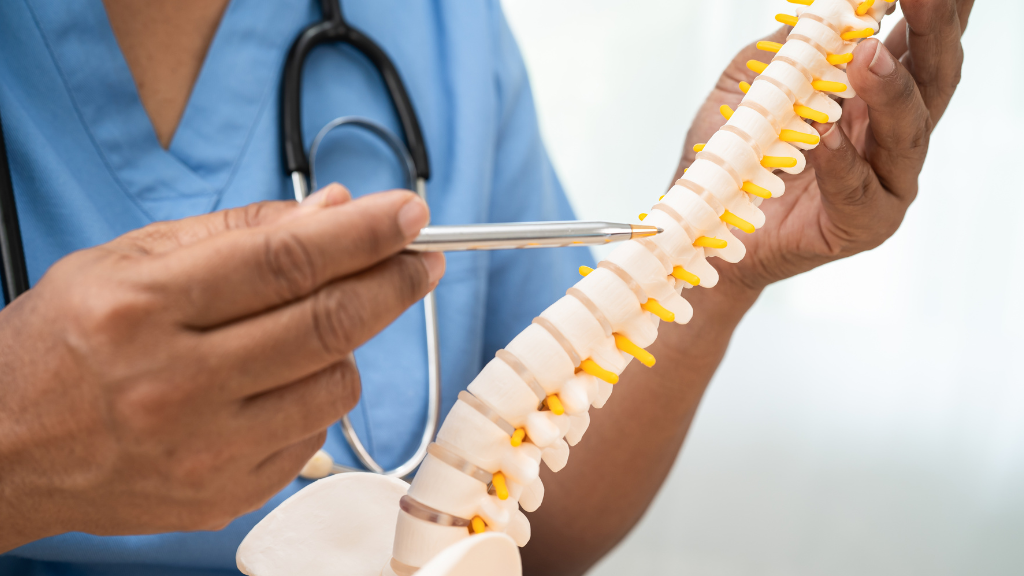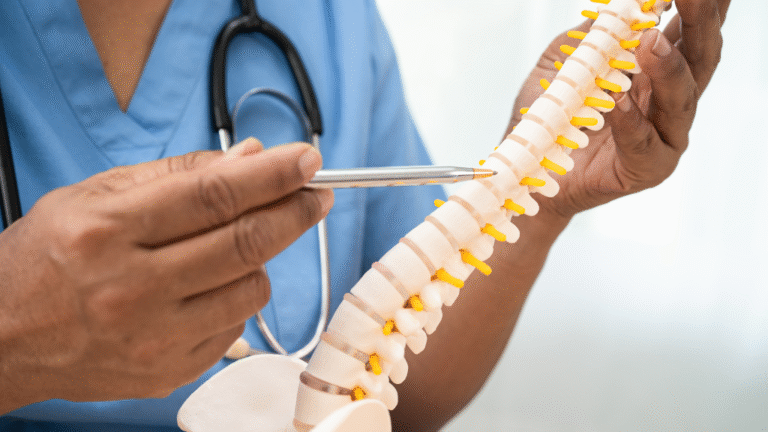Living with chronic back pain or a degenerative spine condition can be exhausting physically, emotionally, and socially. When conservative treatments such as physical therapy, pain medication, or lifestyle changes no longer provide relief, patients often face two main surgical options: Artificial Disc Replacement (ADR) and Spinal Fusion.
Both procedures are designed to reduce pain and restore mobility, but they work in very different ways. Understanding their benefits, risks, and long-term outcomes is essential before making a decision.
What Is Artificial Disc Replacement?
Artificial Disc Replacement is a procedure that removes a damaged spinal disc and replaces it with a prosthetic implant. Unlike fusion, which stops movement, ADR aims to preserve flexibility and allow the spine to function as naturally as possible.
Key characteristics of ADR include:
- Performed mostly in the cervical (neck) and lumbar (lower back) regions.
- Designed to mimic the natural movement of the disc.
- Usually recommended for patients with single-level disc disease.
Main advantages:
- Preserves mobility and spinal motion.
- Reduces risk of degeneration in adjacent levels.
- Faster rehabilitation and return to daily life.
Limitations to consider:
- Not suitable for patients with osteoporosis, deformities, or multi-level damage.
- Implant longevity, although usually decades, may vary by patient.
Artificial Disc Replacement is often recommended for patients with lumbar disc degeneration, one of the most frequent causes of chronic lower back pain. For a deeper understanding of how back pain is diagnosed and treated beyond surgery, see our guide on Comprehensive Lower Back Pain Treatment.
What Is Spinal Fusion?
Spinal Fusion is one of the most traditional and widely used spine surgeries. It involves permanently joining two or more vertebrae with bone grafts, screws, and rods, stopping motion in the affected area.
This technique is especially effective for:
- Complex deformities like scoliosis.
- Severe instability or fractures.
- Advanced degenerative disc disease.
Benefits of Spinal Fusion:
- Provides strong long-term stability.
- Can be performed across multiple spinal levels.
- Supported by decades of clinical success.
Disadvantages compared to ADR:
- Eliminates natural movement at the fused level.
- Longer recovery period.
- Higher likelihood of stress on nearby discs.
Comparing Artificial Disc Replacement and Spinal Fusion
Both ADR and Spinal Fusion are effective, but their outcomes differ. Knowing these differences helps patients make informed decisions with their specialists.
Mobility and Function
- ADR: Maintains natural motion, making everyday activities feel more natural.
- Fusion: Eliminates motion in the fused area, reducing flexibility.
Recovery Time
- ADR: Patients often return to work and light activities within weeks.
- Fusion: Requires several months for bones to fully heal.
Risk of Future Problems
- ADR: Lower risk of new degeneration in nearby discs.
- Fusion: Increased stress on adjacent segments, sometimes leading to further surgeries.
Surgical Complexity
- ADR: Precise implant placement, usually one or two levels.
- Fusion: Can be applied to multiple levels, suitable for complex cases.
Longevity of Results
- ADR: Implants designed to last 15–20 years or more.
- Fusion: Permanent but may cause future issues in adjacent areas.
When to Consider Artificial Disc Replacement
ADR is not for everyone, but it offers excellent results in carefully selected patients. It is particularly beneficial for younger or active individuals who want to remain flexible after surgery.
You may be a candidate for ADR if you:
- Have single-level disc disease in the cervical or lumbar spine.
- Wish to preserve spinal motion.
- Do not have advanced osteoporosis or arthritis.
- Want a faster return to physical activities.
When to Consider Spinal Fusion
The selection of fusion occurs when stability stands as the primary objective especially in situations involving complex or multi-level conditions. The trade-off of motion leads to better long-term stability which decreases pain.
Spinal Fusion may be the best choice if you:
- Have spinal deformities such as scoliosis.
- Require surgery across multiple spinal levels.
- Suffer from advanced arthritis or widespread degeneration.
- Need strong stabilization to prevent instability-related pain.
Trends and Innovations in Spine Surgery
Spinal surgery is evolving rapidly. Surgical practices of today allow surgeons to conduct procedures through innovative methods which improve safety standards and minimize recovery duration.
Some of the most important innovations include:
- Motion-preserving implants that improve ADR outcomes.
- Robot-assisted surgery for higher precision.
- Navigation and digital imaging to plan with accuracy.
- Minimally invasive techniques that reduce scarring, blood loss, and hospital stay.
In Spain, Ribera Care International integrates these technologies into personalized treatment plans, offering international patients both advanced care and a seamless recovery experience.
Your medical diagnosis and personal lifestyle and desired outcomes will determine which treatment between Artificial Disc Replacement and Spinal Fusion is best for you. The main difference between ADR and fusion exists in their spinal motion methods because ADR preserves natural spinal movement but fusion provides strong stability for complex cases.
Patients seeking spine surgery in Spain can benefit from highly trained surgeons, modern hospitals, and comprehensive care programs tailored to international patients. If you’re exploring your options, consulting with a spine specialist is the best first step.
Learn more about your possibilities by contacting Ribera Care International.
FAQs About Artificial Disc Replacement and Spinal Fusion
Is Artificial Disc Replacement safer than Spinal Fusion?
Both surgeries are safe when performed by experienced surgeons, but they serve different purposes. ADR is often seen as safer for preserving motion and avoiding long-term complications like adjacent disc disease. Fusion, however, is safer for patients needing stability due to deformities or fractures. The “safest” choice depends on your individual diagnosis and goals.
How long do artificial discs last?
Modern ADR implants are engineered to last 15–20 years or longer. Many patients never need revision surgery. Longevity depends on age, activity level, and bone health. Clinical studies show high success rates even decades after implantation, making ADR a strong option for younger patients.
Will I lose flexibility with spinal fusion?
Yes, spinal fusion eliminates motion at the fused level.Daily activities like walking or bending remain possible, but twisting and certain sports may feel restricted. The majority of patients adapt well to this treatment because the pain reduction benefits them more than the loss of movement.
Which procedure has a faster recovery?
ADR patients typically return to normal activities within weeks, while fusion requires several months of healing. Fusion patients must allow time for the bone graft to solidify, which makes recovery slower. However, both surgeries require physiotherapy and medical supervision to achieve optimal results.
Can both surgeries be performed minimally invasively?
Yes. In many cases, surgeons can perform ADR and Fusion with minimally invasive techniques. This means smaller incisions, less blood loss, and shorter hospital stays. Not all patients qualify, but when possible, minimally invasive approaches improve the overall recovery experience.






















